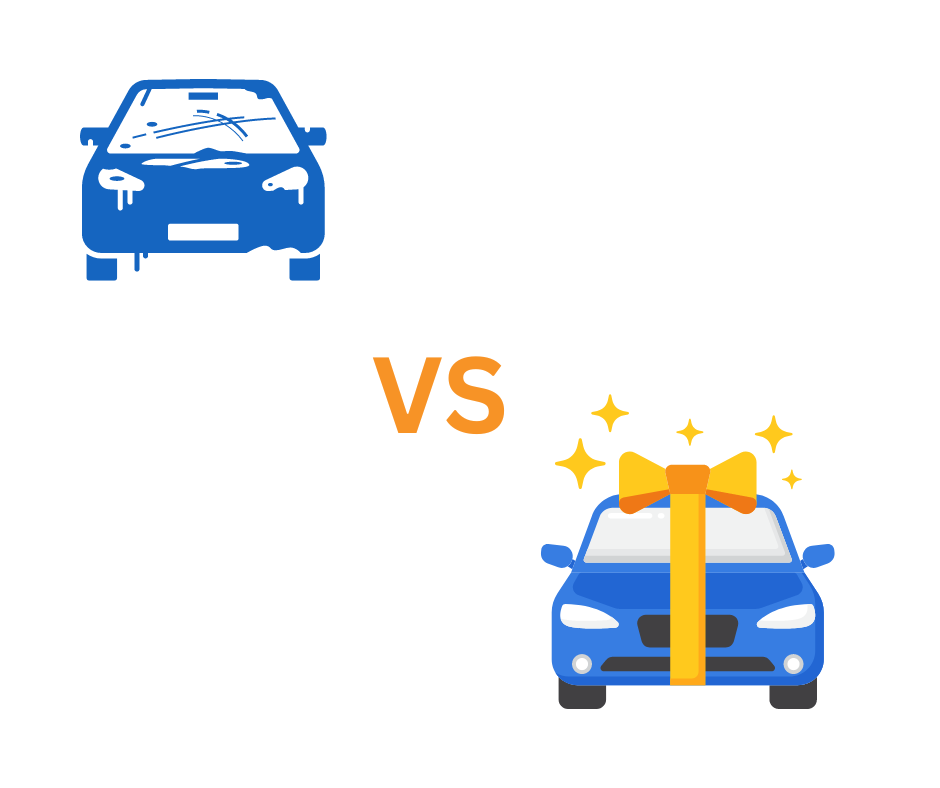Congratulations on your new vehicle purchase! As you embark on this exciting journey, one crucial task you must not overlook is transferring your insurance to your newly acquired vehicle. Insurance coverage is essential to protect your investment and provide peace of mind while on the road. In this guide, we will walk you through the steps to smoothly transfer insurance to your newly purchased vehicle.
Click on these Sample Rates Below
Contact your insurance provider to Transfer Insurance to the new Vehicle
The first step is to get in touch with your current insurance company. Reach out to them via their customer service hotline or through their online portal. Inform them about your new vehicle and provide details such as the make, model, year, and vehicle identification number (VIN). This initial communication will set the wheels in motion for the insurance transfer process.
Typically you have a grace period of a few days up to a month depending on the auto insurance company. However, it is recommended that you inform your insurance company and update the coverages as soon as possible, even before you leave the car lot with your new car.
Discuss coverage options when you Transfer Insurance
While transferring insurance, take the opportunity to review your coverage options. Consider factors such as the value of your new vehicle, your driving habits, and any changes in your insurance needs. Engage in a conversation with your insurance provider to ensure you have appropriate coverage for your new vehicle. They can offer guidance and suggestions tailored to your requirements. Click here if you are taking out a loan.

Here are some coverage options to consider during the insurance transfer process:
- Collision coverage: Collision coverage pays for damages to your vehicle in the event of a collision, regardless of fault. Evaluate whether you currently have collision coverage or if you need to add it to your policy. This coverage is particularly important if you have a new or valuable vehicle that you want to protect against potential damage.
- Comprehensive coverage: Comprehensive coverage protects your vehicle against non-collision incidents, such as theft, vandalism, natural disasters, or damage from falling objects. Determine if you have comprehensive coverage and assess whether you want to continue or modify the level of coverage based on your new vehicle’s value and risk tolerance.
- Uninsured/underinsured motorist coverage: This coverage is designed to protect you if you are involved in an accident with a driver who has insufficient insurance or no insurance at all. It helps cover your medical expenses and vehicle repairs. Review your uninsured/underinsured motorist coverage limits to ensure they provide adequate protection.
- Personal injury protection (PIP) or medical payments coverage: PIP or medical payments coverage provides medical expenses coverage for you and your passengers, regardless of fault. If you do not have health insurance that covers car accident-related injuries, consider adding or adjusting this coverage to protect yourself and your passengers.
- Roadside assistance: Evaluate whether you want to include roadside assistance in your policy. Roadside assistance provides services such as towing, battery jump-starts, flat tire changes, and emergency fuel delivery. It can be beneficial for unexpected breakdowns or incidents on the road.
Transfer Insurance: Finding Better Rates
If you are not happy with your auto insurance rate when trying to transfer Insurance to a new vehicle, there are several actions you can take to address the situation:
- Shop around for quotes: Consider obtaining quotes from different insurance providers to compare rates. Many insurance companies offer online quote tools that allow you to easily get estimates. By exploring other options, you may find a company that offers a more competitive rate for your new vehicle.
- Review your coverage needs: Assess your insurance coverage needs and determine if any adjustments can be made to lower your premium. For example, you could consider increasing your deductible, reducing coverage limits, or removing optional coverage that you no longer require. However, be cautious when making changes to ensure you still have adequate protection for your new vehicle.
- Inquire about discounts: Ask your insurance provider about available discounts that you may qualify for. Insurance companies often offer various discounts based on factors such as safe driving records, bundling multiple policies, installing anti-theft devices, or completing defensive driving courses. Taking advantage of these discounts can help lower your insurance premium.
- Consider usage-based insurance: Some insurance companies offer usage-based insurance programs where your premium is based on your driving habits. This involves installing a telematics device in your vehicle or using a mobile app to monitor your driving behaviors. If you are a safe and low-mileage driver, this type of insurance can potentially result in lower rates.
- Negotiate with your current provider: Contact your insurance provider and express your concerns about the rate increase. In some cases, they can offer alternative options to help meet your needs. Discuss your situation with them and see if they can provide any solutions or discounts.
- Seek advice from an insurance agent or broker: If you’re unsure about the best course of action, consider consulting with an independent insurance agent or broker. They have expertise in the insurance industry and can provide guidance tailored to your specific situation. They can help you navigate the market, explore options, and potentially find better rates.
Remember, when making changes to your insurance coverage, ensure that you still maintain the necessary level of protection for your new vehicle and comply with legal requirements.
Transferring insurance to a newly purchased vehicle is an important step to protect your investment and maintain legal compliance. By following these steps and maintaining open communication with your insurance provider, you can ensure a seamless transfer process. Remember, each insurance company may have specific requirements, so it’s best to contact your provider directly for personalized instructions. Drive safely and enjoy the journey with your new vehicle!
INSURANCE SERVICES WE OFFER

Homeowners Insurance
Homeowners, renters, and mobile home owners: make sure you have the protection you need.
Last Updated on by Camron Moss





